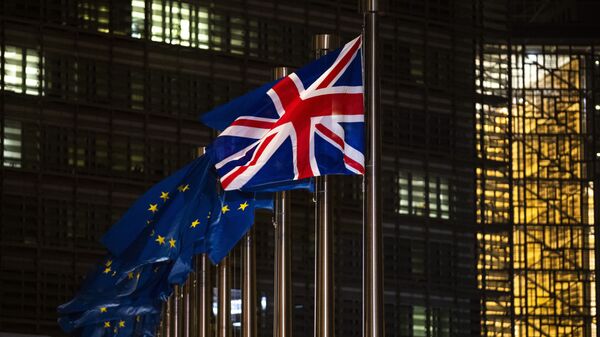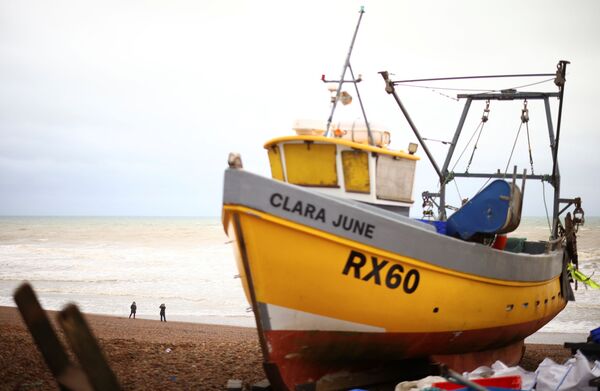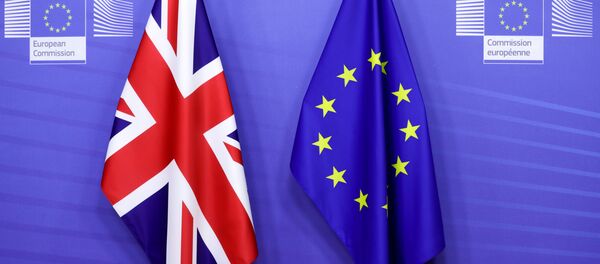After months of fraught negotiations, the UK agreed on a Post-Brexit trade deal with the European Union on December 24, which including annexes, runs to 2,000 pages long.
Both sides now have to vote on the deal before it can enter force. The UK parliament is widely expected to vote on December 30. Leader of the opposition Labour Party, Sir Keir Starmer, who campaigned against Brexit, has said that his party will vote for the deal. The agreement also has to be ratified by the European Parliament, which has said that it does not have time to discuss the vote before the transition period expires on December 31. This means that for Brussels, the deal will have to be “provisionally applied” until members of the European Parliament return to vote on it in January.
But what does the post-Brexit deal look like in practice? Here is a brief summary of the main agreements.
Trade
The deal marks the first zero-tariff and zero-quota trade deal in the EU’s history. This means that there will be zero tariffs on the movement of goods between British and European markets.The agreement covers over £600 billion a year in cross-border trade.
Customs Checks
While the deal provides for zero tariffs between the UK and the EU, there will be considerable red tape and non-tariff barriers. A new “rules of origin” regulation will mean that UK companies must self-certify the origin of exports to the EU, likely making the process of doing business slightly more costly. However, in what is seen as a win for the UK, Boris Johnson’s negotiators convinced Brussels under the rules of origin to count goods entering the EU from Britain as “British” as long as no more than 40% of a given product has origins outside of Britain and the EU, such as in China. However, both sides have given the nod of approval to a new “trusted trader” set of rules that will attempt to speed up the processing of the cross-border flow of goods.
Freedom of Movement
Freedom of movement for EU nationals into the UK will now end and will be replaced by a points-based immigration system, meeting a key demand of the Brexit project. British nationals will no longer be able to freely live, work, study or open businesses in the EU. Moreover, visas will have to be secured for stays in the EU of over 90 days.
Moreover, the Erasmus European universities exchange programme will also no longer apply to most of Britain. The Irish government has however said that students in Northern Ireland will be able to continue using the Erasmus scheme in order to ensure that they “will never be left behind” citizens in the Republic of Ireland.
Fisheries
The UK will leave the common fisheries policy. Currently, the yearly turnover of European fishing vessels from UK waters is about €650 million while the UK’s fleets bring in approximately €850 million. Under the new post-Brexit trade deal, the EU’s quota will be reduced to 25% over the next five and a half years.
About a quarter of the EU’s catch, about €162.5 million a year, will be “repatriated” to UK vessels by the end of the five and a half years period from 2026. Following that, the two sides will enter into negotiations over future terms relating to the regulation of fish catches.
The EU also ditched its so-called “hammer” demand that it could slap economic sanctions on any UK sector it wanted if it did not get its own way on fisheries. European boats that catch fish 12 nautical miles from British coasts will be able to continue doing so during the five and a half year transition period, following which future access will be negotiated on an annual basis.
Subsidies and State Aid
Brussels has longstanding anxieties that London would unfairly subsidise some of its own companies in order to gain a competitive edge. However, in a win for the UK side, London will set up its own independent regulatory body that will check to make sure Britain is not unfairly distorting trade through the provision of subsidies to its companies.
Level Playing Field
Both parties have agreed to a minimum standard of social, labour and environmental standard below which neither side must go. EU Commission President Ursula von der Leyen has noted that there will be a review after four years to ensure that the level playing field is functioning properly.
The UK has agreed to a “rebalancing mechanism” which means that either side can carry out a formal review of the deal’s economic and trade components including the minimum level of standards. Moreover, the EU could respond with sanctions in the form of tariffs if Britain puts its companies in an unfair position of advantage by lowering trading standards or if those standard diverged over time, and vice versa. As part of this effort, both sides also agreed on a “non-regression” clause which says that they will not lower standards in any effort to pull the rug out from one another on trade.
Dispute Resolution
Previously, Angela Merkel said that disagreements over an arbitration mechanism in the event of disputes over state aid and trading standards were the most significant obstacle to a deal being made. However, in a big win for the Brexiteers, the agreement says that there will be no rule for the European Court of Justice.

Instead, in the event of a dispute on trade terms and standards between both sides, a new dispute mechanism based on international law will be established. The panel will meet within 30 days and adjudicate in the event of an accusation of trade distortion by either side. This arbitration panel, made up of representatives from both the EU and the UK, will be available to both sides in the event of disagreements and will be the body to slap tariffs on any side in the event of unfair practices.
Tariffs will only be implementable by the arbitration body, meaning that Brussels will not be able to unilaterally impose “lightening tariffs” on the UK through the “ratchet clause” that it had previously suggested.
Northern Ireland
The territory will have to continue following single market regulations in order to ensure that its border with The Republic of Ireland can stay open. There will be customs processed for products crossing the Irish Sea because Northern Ireland will continue to have access to the EU’s customs union while simultaneously remaining part of the UK customs union. Moreover, the north will still be subject to the many laws of the European Court of Justice.
Security and Law Enforcement
Both sides have agreed to continue close cooperation on matters relating to counter-terrorism and serious crime. The UK will no longer be party to the European Arrest Warrant System, nor will it be a member of Europol or Eurojust. However, the deal says that there will be “continued cooperation between national police and judicial authorities” as well as “continued cooperation between the UK, Europol and Eurojust.”
The UK will no longer have real-time access to DNA or airlines passenger information from the EU, but will still be able to access them relatively quickly.
The UK also now has the right to forcefully deport foreign criminals from within the EU, a right The European Court of Justice has previously denied the British sovereign.






